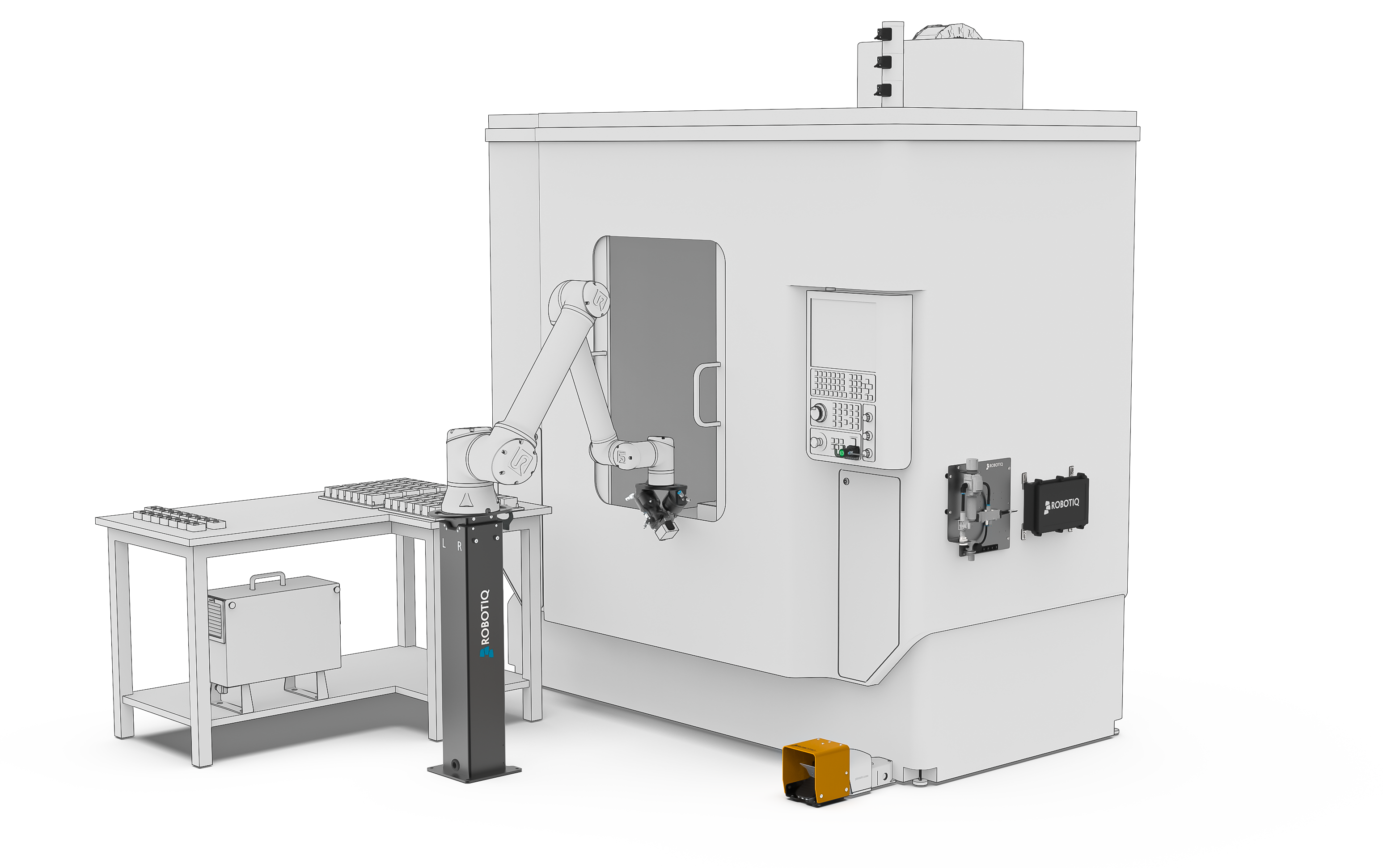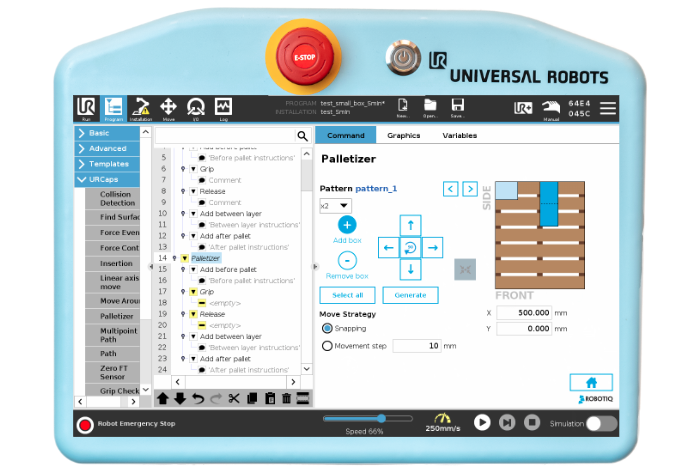Which is Better? Intrusive or Non-Intrusive CNC Machine Tending?

Posted on Nov 15, 2022 in Automation
5 min read time
When it comes to machine tending automation, the easiest to deploy solutions are almost always those that are simplest.
But does this mean you should choose an intrusive or a non-intrusive solution?
Intrusive automation solutions are custom built for your specific needs. This means they are perfectly suited to your production line, but the integration process is lengthy, complex, and costly. Non-intrusive automation solutions, on the other hand, are quick to deploy and can be easily applied to almost any production line.
Which type of solution is better? Custom intrusive automation or off-the-shelf non-intrusive automation?
With the right information and a clear understanding of both options, you can make the most appropriate choice for your machine tending process.
What is CNC machine tending and why automate?
Robotic machine tending is the process of using robots to load and unload parts from CNC machines. This usually involves adding raw materials to the machine and removing the finished products after the machining cycle.
Machine tending automation can help improve the efficiency of your manufacturing process by removing this dull and repetitive task from the hands of human workers.
Those machinists can then move to more valuable and interesting tasks within your facility. This makes their jobs more rewarding and helps improve safety as they are not interacting with dangerous machinery.
Other benefits of automated machine tending is that it helps improve product quality by ensuring parts are always placed in the machine in exactly the same way every time.

Intrusive vs non-intrusive CNC machine tending
You can think of there being two types of robotic machine tending solution: intrusive and non-intrusive.
Intrusive systems require extensive integration time and budget. You either need a high degree of knowledge and expertise in robotic integration or you must hire someone who does.
In contrast, a non-intrusive solution — the Robotiq Machine Tending Solution is the pioneer in this approach — is based on standard, off-the-shelf technologies. Thanks to this simple approach, you can use non-intrusive solutions with almost any CNC machine.
Here are the pros and cons of each approach:
Intrusive machine tending solutions
This is the classic type of robotic machine tending. Before the Robotiq solution came along, this was the only type.
Intrusive solutions require you to integrate with the CNC machine's controller and hardware via the robot’s programming.
Advantages of intrusive automation are:
-
Fully customized to your specific machine.
-
Allows you to access all CNC machine functionality, with advanced programming.
-
Well-established approach, so there are many solutions on the market.
Disadvantages are:
-
Integration is complex and expensive, taking a lot of time.
-
Requires extensive robotics knowledge and expertise.
-
Hard to improve and update following changes to the process.
Non-intrusive machine tending solutions
The Robotiq Machine Tending Solution takes a very different approach. It is a non-intrusive solution.

Non-intrusive means that the solution uses standard technologies like light sensors and linear actuators. Instead of interfacing with the CNC machine's communication protocols, the robotic system uses these off-the-shelf components to interact as a human operator would — by looking at the status lights and pressing buttons.
This is a simpler, cheaper alternative and can be easily applied to almost any CNC machine.
Advantages of non-intrusive automation are:
-
Simpler to deploy and very easy to use.
-
No robotics knowledge or programming skills needed.
-
Compatible with many more CNC machines.
Disadvantages are:
-
There are fewer solutions on the market. Our solution is a pioneer.
-
Potentially less suitable to full-scale automation across an entire manufacturing plant.
-
If you want to access more advanced functionality of the CNC machine, you'll need extra integration.
How a non-intrusive machine tending solution works
How can a machine tending robot interface with your CNC machine without using the machine's communication protocols?
With the Robotiq solution, we have solved one of the biggest challenges with conventional CNC machine tending using a simple approach.
The basic philosophy behind a non-intrusive system is this: Use the CNC machine in the same way as a human operator would.
This involves:
-
Using light sensors to detect the CNC machine's status by "looking" at its status lights.
-
Using a linear actuator to press the machine's foot pedal to open and close the door.
-
Pressing the "Start" button on the machine's control panel to activate the next machining cycle.
These solutions are extremely simple. With this approach, we can remove a huge amount of the friction that is commonly associated with machine tending automation.
How to choose the right type of automation for your business
Finding the right automation solution for your business can be a tough decision. There are a lot of competing solutions on the market. To the untrained eye, these solutions can seem to be quite similar, even if they are actually very different.
There is no one-size-fits-all for automation — although the Robotiq Machine Tending Solution comes close. Several factors will influence your choice of solution, including the size of your company, the amount of automation you want to deploy, and the specific needs of your machinists.
Whatever machine tending solution you choose, try to find examples of people who have done the same as you. You can find some examples of teams that have applied machine tending automation in our case study library.
Your choice: custom vs. off-the-shelf automation
Ultimately, the choice of whether you automate with an intrusive or a non-intrusive solution is up to you.
With the right information and guidance, you can make the best decision for your needs, budget, and level of experience.
The most important thing is to find a solution that will allow you to automate your specific CNC machines. With the right solution, you will join the many businesses that are using robots to make their production more efficient.
You can also see our Machine Tending Solution in action in this demo.
What has held you back from machine tending automation until now? Tell us in the comments below or join the discussion on LinkedIn, Twitter, Facebook, or the DoF professional robotics community.








Leave a comment